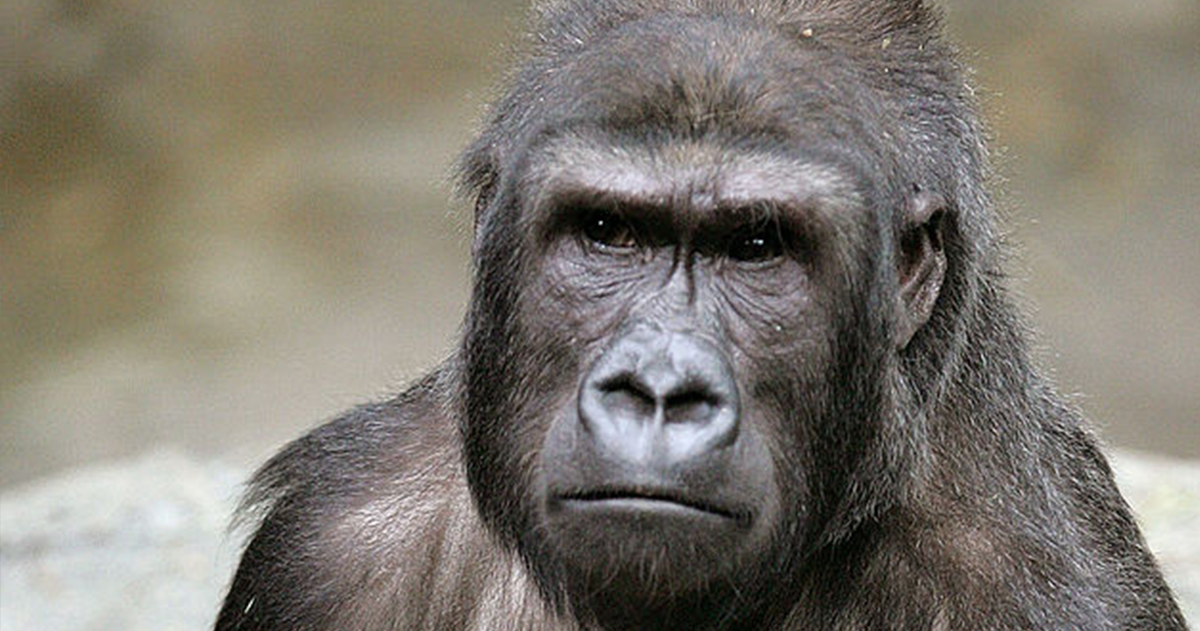Amid the unpredictability of life, there are rare, awe-inspiring moments that remind us of the invisible threads connecting all living beings. One such extraordinary event unfolded over two decades ago, not in the wild, but in the quiet heart of Illinois—at the Brookfield Zoo.
It was the summer of 1996, a warm day like any other, until a tragedy unfolded in the gorilla enclosure. A young boy, just three years old, slipped from a protective barrier and plunged 25 feet into the habitat below. The fall left him unconscious and severely injured. Panic rippled through the crowd. His mother’s screams pierced the air. Onlookers froze, fearing the worst.
Inside that enclosure were seven western lowland gorillas. But among them was one who would soon be remembered far beyond the walls of the zoo—Binti Jua, a 160-pound female gorilla known for her quiet presence and soulful eyes.
Jeff Bruno, a captain with the Kankakee Fire Department, was at the zoo that day with his family. As he recalls, the gasps and cries from the crowd drew everyone’s attention toward the pit. What they witnessed next was nothing short of astonishing.
With the child lying motionless on the ground, Binti slowly approached. Cameras, quickly grabbed by visitors including Bruno’s own brother-in-law, began to roll—capturing a moment that would become a powerful symbol of unexpected compassion.
Binti didn’t rush. She didn’t panic. Instead, she moved with careful intention, her baby Koola clinging to her back. She gently picked up the unconscious boy, cradling him in her arms as if he were her own.
As the other gorillas began to stir, zoo staff used hoses to encourage them to back away. But Binti was already taking action. She carried the boy toward a service entrance and gently laid him down before stepping away, giving the rescuers the space they needed to reach him.
“It was surreal,” Bruno later said. “We had very little equipment, so we used what we had—duct tape included—to stabilize him.”
Miraculously, the boy survived. His injuries included a broken hand and a concussion, but his condition stabilized in the days that followed. His name was never released, as his family chose to remain private. Doctors later shared that the child had no memory of the fall—and perhaps, thankfully, not of the terror that surrounded it.
As news of the incident spread, Binti Jua became a global sensation. Her face appeared on magazine covers. Newsweek dubbed her “Hero of the Year,” while People Magazine listed her among their “Most Intriguing” individuals—despite her not being human.
Visitors flocked to Brookfield Zoo just to catch a glimpse of the gorilla who had shown more grace and empathy than many expected from any animal, let alone one often misunderstood as dangerous or unpredictable.
What makes Binti’s story even more moving is that her gentle response wasn’t entirely the product of instinct—or at least not in the traditional sense. Rejected by her own mother at birth, Binti was hand-raised by humans. As she grew, she was trained to care for young gorillas and even taught how to bring her baby to zookeepers for medical checkups. But as experts like renowned primatologist Frans de Waal have noted, what Binti displayed that day went far beyond learned behavior. It was empathy in its purest form.
Her actions sparked broader conversations among scientists and animal behaviorists. Were her choices the result of conditioning—or were they a natural expression of maternal compassion, something deeply embedded within her?
Binti’s story wasn’t the first of its kind. In the 1980s, a male gorilla named Jambo at the Jersey Zoo made headlines when he guarded a child who had also fallen into an enclosure. These instances challenge the long-standing myths of aggression tied to gorillas—myths shaped more by fiction than fact.
Hollywood has often portrayed these animals as monsters, towering forces of destruction. But Binti Jua shattered that image. She reminded the world that gorillas, like us, are capable of love, care, and selflessness.
Even now, decades later, her legacy continues to resonate. She’s not just remembered as a gorilla who once rescued a child—she’s remembered as a symbol of hope, of cross-species connection, and of the quiet, powerful kindness that can exist in the most unexpected places.
At a time when headlines are filled with division and fear, Binti’s story serves as a timeless reminder: compassion knows no species. It lives in the instinct of a mother, in the hearts of animals, and in the moments when we choose to protect rather than harm.
If her story moved you, share it. Not for the sake of viral fame, but as a tribute to a gentle giant who showed us all what it truly means to care.
